
 Instagram
Instagram
Is Vaping Safe?

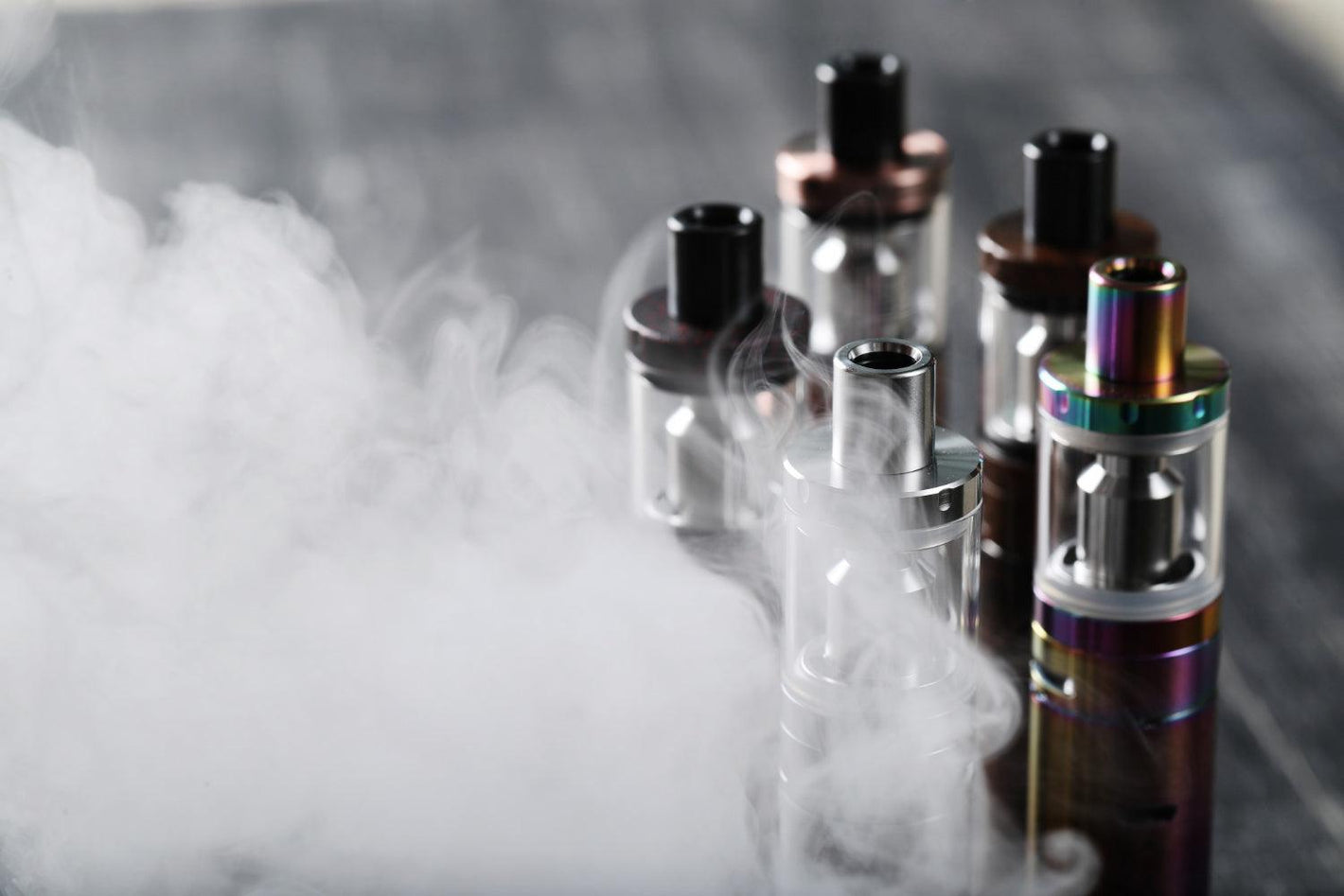
Related products
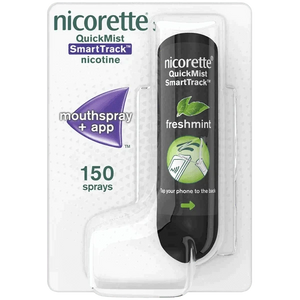
Introduction
Vaping, a term that has become increasingly prevalent in today's lexicon, refers to the act of inhaling aerosols produced by electronic cigarettes or similar devices. These devices, often resembling traditional cigarettes, pens, or USB flash drives, operate by heating a liquid that typically contains nicotine, flavorings, and other chemicals. Vaping has emerged as a popular alternative to smoking, especially among younger demographics, with a noticeable surge in its usage over the past decade.
The purpose of this article is to delve into the critical question: Is vaping safe? In exploring this subject, we aim to provide a nuanced understanding of the safety profile of vaping. Our investigation is not just limited to the direct health implications but also considers the broader impact on public health. By comparing the risks and benefits of vaping with those of traditional smoking, we strive to offer a comprehensive perspective that can guide individuals in making informed decisions. Many people use alternatives like Nicotinell 2mg Mint Lozenges to aid in quitting smoking, often in tandem with or as a transition from vaping.
Dr. Emily Sutton, a renowned pulmonologist, highlights the complexity of assessing vaping's safety. "Vaping is often perceived as a safer alternative to smoking. However, this perception may not fully align with the emerging clinical evidence," she notes. This statement underscores a key theme of our exploration: the need to critically evaluate the perceived safety of vaping against the backdrop of evolving scientific evidence. This is why many ex-smokers opt for structured support tools, including medically guided solutions like Varenicline, which help reduce nicotine cravings without the use of tobacco or vapour.
Statistics from the National Health Service (NHS) in the UK indicate a significant uptick in vaping, especially among former smokers. According to the NHS, approximately 2.7 million people in the UK were using e-cigarettes in 2020, a stark increase from just a few hundred thousand a decade ago. These figures not only demonstrate the growing prevalence of vaping but also suggest its potential role in smoking cessation.
However, it's essential to juxtapose these statistics with emerging health concerns. Recent studies have begun to shed light on the potential risks associated with vaping. For instance, a study published in the 'British Medical Journal' found that certain chemicals used in vaping liquids could have adverse effects on lung health. This finding resonates with the thesis of our article: examining the balance between the potential benefits of vaping as a smoking cessation aid and its emerging health risks.
The comparison with traditional smoking is particularly pertinent. While it's widely accepted that smoking tobacco is harmful, leading to numerous health problems such as lung cancer, heart disease, and stroke, the narrative around vaping is less clear-cut. "Vaping might be less harmful than traditional smoking, but 'less harmful' doesn't equate to safe," argues Dr. Sutton. Here, the emphasis is on understanding that while vaping may reduce certain risks associated with smoking, it introduces its own set of potential hazards.
Furthermore, the public health perspective cannot be overlooked. Public Health England maintains that vaping is 95% less harmful than smoking. This statistic, however, should not be viewed in isolation. The rise in vaping, particularly among young people who have never smoked, raises concerns about a new generation getting hooked on nicotine through vaping. "We're seeing a worrying trend of non-smokers taking up vaping," says Dr. Jane Morrison, a public health expert. Her concern reflects the broader public health dilemma: balancing vaping as a tool for harm reduction in smokers against its potential to entice non-smokers into nicotine addiction.
To address this, educational resources and access to safe cessation aids like those in the Stop Smoking collection are becoming increasingly critical for harm reduction strategies.
Background and History
The story of vaping is a fascinating journey from a nascent idea to a global phenomenon. Its origins can be traced back to the mid-20th century, but it wasn't until the early 2000s that vaping began to gain mainstream attention. The conceptualization of vaping is often credited to Herbert A. Gilbert, who patented a "smokeless non-tobacco cigarette" in the 1960s. However, it was Chinese pharmacist Hon Lik who is widely acknowledged for inventing the modern e-cigarette in 2003. His invention was motivated by a personal tragedy – the death of his father due to lung cancer from smoking – and a desire to create a safer alternative to traditional tobacco cigarettes.
The evolution of vaping devices since then has been rapid and transformative. Initially, e-cigarettes were designed to mimic the look and feel of traditional cigarettes, but with the advantage of being smoke-free. These first-generation devices, often referred to as "cig-a-likes," were simplistic in design and function. As technology advanced, so did the sophistication of vaping devices. The second generation saw the introduction of vape pens, which offered better battery life and the ability to refill with e-liquid. The third generation included mods, larger devices that provided more power and customization options, appealing to a growing community of vaping enthusiasts. Today, the market is diverse, featuring everything from discreet pod systems to high-powered advanced personal vaporizers. In parallel, products like Nicorette QuickMist Cool Berry Spray have gained popularity for delivering fast-acting nicotine without the risks of combustion or vapor, offering a helpful solution to people who want rapid relief during nicotine withdrawal.
The substances used in vaping have also evolved. Initially, e-liquids primarily contained propylene glycol, vegetable glycerin, nicotine, and flavorings. Over time, the variety of flavors has expanded dramatically, catering to a broad range of preferences. Nicotine strengths have diversified too, with options ranging from high-strength nicotine salts to zero-nicotine formulas. This variety plays a critical role in vaping's appeal, offering smokers different options to transition away from traditional cigarettes.
On a global scale, vaping has seen a dramatic rise in popularity. According to the World Health Organization (WHO), there were an estimated 41 million vapers worldwide in 2018, a number that is expected to rise to more than 55 million by 2021. This global trend is not uniform; it varies significantly from one region to another. In countries like the UK, vaping is largely viewed as a tool for smoking cessation, with public health bodies like Public Health England advocating its use as a lesser evil compared to smoking. In contrast, countries like Thailand and Brazil have imposed strict bans on the sale and use of e-cigarettes, citing health concerns.
The rise of vaping has not been without controversy. Debates continue over its safety, the appropriateness of flavors that might appeal to youths, and the adequacy of regulation. These debates reflect a broader struggle to balance public health interests with individual freedoms and the challenges of introducing a disruptive technology into the complex landscape of public health policy.
The history of vaping is a narrative of innovation, transformation, and controversy. From its inception as an idea to replace smoking to its current status as a global phenomenon, vaping's journey is intertwined with technological advancements, changing social attitudes, and ongoing debates about health and regulation. This backdrop is crucial for understanding the current discourse on vaping's safety and its place in society.
Components of Vaping

Vaping devices, also known as e-cigarettes or vaporizers, come in various shapes and sizes, but they all share a common functionality. A typical vaping device consists of a battery, a heating element (coil), a tank or cartridge to hold the e-liquid, and a mouthpiece. The battery powers the heating element, which in turn heats the e-liquid in the tank, turning it into an aerosol that the user inhales through the mouthpiece. The design and sophistication of these devices can range from simple, disposable e-cigarettes to advanced, refillable systems with customizable settings.
The chemical composition of vaping liquids, or e-liquids, is a key aspect of vaping. E-liquids typically contain the following main components:
-
Nicotine: This addictive substance, found in tobacco plants, is a common ingredient in many e-liquids, especially those designed for smokers trying to quit. Nicotine content in e-liquids can vary widely, allowing users to choose according to their preference and needs.
-
Flavorings: Flavorings are added to make the vaping experience more enjoyable and diverse. The range of flavors available is vast, including fruit, dessert, menthol, and even tobacco flavors. While these flavorings are generally considered safe for consumption, there is ongoing research into their effects when inhaled.
-
Propylene Glycol (PG): PG is a colorless, odorless liquid with a slightly sweet taste. It is used in e-liquids to produce what is known as 'throat hit,' a sensation that smokers often seek. It's also a carrier for flavorings and nicotine. PG is recognized as safe for ingestion by health authorities, but its effects when inhaled over long periods are still under study.
-
Vegetable Glycerin (VG): VG is a thicker, sweeter liquid compared to PG. It is responsible for producing the visible vapor or 'clouds' that many vapers enjoy. E-liquids with a higher VG content are popular among users who prefer a smoother throat hit and more substantial vapor production.
The variations in vaping products are primarily seen in the nicotine strengths and flavors offered. Nicotine strengths can range from zero nicotine to high levels (sometimes as much as 50 mg/mL in the case of nicotine salts, a newer form of nicotine that is more rapidly absorbed and smoother to inhale). This range allows users to customize their vaping experience, whether they are trying to reduce their nicotine intake or seeking a particular throat hit intensity.
Because of the risk these substances pose when inhaled over long periods, alternatives like Nicorette Cools Icy Mint Lozenges are becoming increasingly favored among health-conscious individuals who still seek craving relief without the respiratory risks associated with vapor.
Flavors play a significant role in the appeal of vaping, with a myriad of options available that cater to virtually every palate. From classic tobacco and menthol to exotic fruits and desserts, the flavoring options in e-liquids are seemingly endless. This diversity is seen as both a benefit and a concern; while it makes vaping attractive to adult smokers looking for alternatives to cigarettes, it also raises concerns about the appeal of these flavors to youths.
Health Impacts
The health impacts of vaping have become a pivotal area of study as the popularity of e-cigarettes continues to rise. Understanding the short-term and long-term effects of vaping is crucial for users and healthcare providers to make informed decisions.
Respiratory issues, cardiovascular stimulation, and addictive potential—primarily from nicotine—remain at the forefront of scientific scrutiny. For many individuals seeking to manage nicotine dependency in a safer, more controlled manner, comprehensive cessation platforms like the Nicorette collection provide a range of options from gums to sprays, designed to help reduce dependency gradually.
Short-term Effects
Respiratory Impact: In the short term, vaping can cause an array of respiratory symptoms. Users often report irritation in the throat and lungs, coughing, and shortness of breath. A study by the American Thoracic Society indicated that even brief exposure to e-cigarette vapor could reduce lung function. Dr. Laura King, a respiratory specialist, explains, "The inhalation of vaporized chemicals can cause irritation to the delicate tissues of the respiratory tract, leading to symptoms that mimic those of smoking-related conditions."
Cardiovascular Impact: Vaping can also have immediate effects on the cardiovascular system. Nicotine, a common ingredient in e-liquids, is a known stimulant and can increase heart rate and blood pressure. A report in the 'Journal of the American Heart Association' found that acute exposure to e-cigarettes resulted in increased arterial stiffness, which is a risk factor for heart disease. "Even short-term use of e-cigarettes can have cardiovascular effects similar to traditional cigarettes," comments Dr. Rachel Elliot, a cardiologist.
Long-term Effects
Potential for Addiction: One of the most significant long-term concerns with vaping is the potential for addiction, primarily due to nicotine. Nicotine is a highly addictive substance, and its use in vaping products raises concerns, especially among young users. The ease of access to high-nicotine e-liquids and the appealing flavors make vaping a potential gateway to nicotine addiction. "The addictive potential of nicotine, regardless of the delivery method, cannot be underestimated," warns Dr. Elliot.
Lung Disease: Long-term vaping may also pose risks to lung health. While definitive conclusions are still being researched, there are indications that prolonged exposure to some chemicals in e-liquids could lead to respiratory problems. Cases of a condition dubbed 'EVALI' (e-cigarette or vaping product use-associated lung injury) have been reported, with symptoms ranging from severe pneumonia to lung damage. Dr. King points out, "EVALI, though still relatively rare, is a serious concern and indicative of the potential harmful effects vaping can have on lung health over time."
Other Chronic Conditions: The long-term implications of vaping on other chronic conditions are still being explored. There is ongoing research into how the inhalation of vaporized chemicals might affect overall health, including potential links to cardiovascular disease and cancer. The uncertainty surrounding these potential risks is a significant concern in the medical community. "We are still in the early stages of understanding the full spectrum of health implications associated with vaping," says Dr. Elliot.
While vaping is often marketed as a safer alternative to traditional smoking, both the short-term and long-term health impacts warrant serious consideration. Respiratory and cardiovascular effects can occur in the short term, and the potential for addiction and other chronic health issues cannot be ignored in the long term. As research continues to evolve, so too will our understanding of the true health implications of vaping, underlining the importance of caution and regulation in this area.
Short-term Effects
Respiratory Impacts
Vaping's short-term respiratory impacts are a growing concern, particularly given its increasing popularity. Inhalation of vapor, which contains a mix of chemicals and particulates, can irritate the respiratory tract. Users often report symptoms such as coughing, throat irritation, and a sensation of tightness in the chest. Dr. Hannah Roberts, a pulmonologist, notes, “Even in the short term, vaping can cause noticeable respiratory discomfort, especially in individuals with pre-existing respiratory conditions like asthma.”
Cardiovascular Impacts
The cardiovascular system is also affected by vaping, primarily due to the presence of nicotine in most e-liquids. Nicotine is a stimulant that can raise heart rate and blood pressure. Short-term use of e-cigarettes has been linked to increased arterial stiffness and heart rate, as highlighted in a study published in the 'Journal of the American Heart Association'. Dr. Edward Martin, a cardiologist, warns, “The cardiovascular effects of vaping, particularly in relation to nicotine exposure, are concerning even in the short term and warrant further attention.”
Long-term Effects
Potential for Addiction
One of the most significant long-term risks associated with vaping is addiction, primarily due to nicotine. Nicotine is highly addictive, and its ease of access through vaping raises concerns, especially among younger users who might be more susceptible to developing a dependence. “The addictive properties of nicotine, irrespective of the delivery method, are well-established,” states Dr. Martin. This addiction can lead to sustained use of vaping products, potentially exposing users to other health risks over time.
Lung Disease
Long-term exposure to vaping can potentially lead to lung diseases. While research is ongoing, there have been reports of cases like 'EVALI' (e-cigarette or vaping product use-associated lung injury), which is characterized by severe respiratory symptoms. Dr. Roberts emphasizes, “There is emerging evidence suggesting that long-term vaping may increase the risk of lung conditions, some of which can be quite serious.”
Other Chronic Conditions
The long-term effects of vaping on other chronic conditions are an area of active research. There are concerns about the potential carcinogenic effects of certain ingredients in e-liquids, as well as the impact of chronic inhalation of vapor on cardiovascular health. “We are still uncovering the broader implications of long-term vaping, but the potential links to chronic conditions like cardiovascular diseases and cancer are areas of significant concern,” explains Dr. Roberts.
While vaping is often perceived as a safer alternative to smoking, it is important to acknowledge its short-term and long-term health impacts. The respiratory and cardiovascular effects in the short term, coupled with the risk of addiction and potential development of chronic diseases in the long term, highlight the need for caution and continued research in this field.
Dangers from Vaping
Risks Associated
Vaping liquids, or e-liquids, contain various chemical components that present specific risks. The primary constituents of most e-liquids are propylene glycol (PG), vegetable glycerin (VG), nicotine, and flavorings, each carrying potential health hazards.
-
Propylene Glycol and Vegetable Glycerin: While generally recognized as safe for ingestion, the inhalation of PG and VG is a different matter. Dr. James Patterson, a toxicologist, points out, “When heated and inhaled, PG and VG can potentially produce irritants that may harm the respiratory system.” There is ongoing research into how these substances affect the lungs over time, particularly when vaporized and inhaled regularly.
-
Nicotine: The addictive substance found in tobacco, nicotine, is also prevalent in many e-liquids. Apart from its addictive potential, nicotine is a stimulant that can have various adverse effects on the body, including increasing heart rate and blood pressure, constricting blood vessels, and potentially leading to cardiovascular issues.
-
Flavorings: The flavoring agents used in e-liquids are a significant concern. While these flavorings are generally safe for oral consumption, their safety when inhaled is not well established. Certain flavors, especially those containing compounds like diacetyl, have been linked to respiratory illnesses. Dr. Patterson warns, “Some flavoring chemicals, which are benign when eaten, can be harmful when inhaled deeply and regularly into the lungs.”
Impact on Respiratory and Cardiovascular Health
The impact of vaping on respiratory and cardiovascular health is increasingly evident, as highlighted in numerous studies and clinical reports.
-
Respiratory Health: The inhalation of vaporized chemicals from e-cigarettes can lead to various respiratory issues. Users may experience symptoms like coughing, wheezing, and shortness of breath. Dr. Laura Benson, a respiratory specialist, states, “We are seeing a rise in vaping-related respiratory issues, which range from mild irritation to more severe conditions like bronchitis.” Furthermore, cases of EVALI have raised serious concerns about the potential for severe lung injury associated with vaping.
-
Cardiovascular Health: The cardiovascular risks associated with vaping are primarily linked to nicotine. Nicotine's stimulant properties can lead to increased heart rate and blood pressure, posing risks for heart disease over time. Additionally, some studies suggest that the particles in vape aerosols may contribute to atherosclerosis (artery hardening), which is a major risk factor for heart attacks and strokes. “The cardiovascular implications of vaping, particularly in long-term users, are a significant concern and need further investigation,” asserts Dr. Benson.
The dangers from vaping, particularly concerning the specific risks of its chemical components and their impact on respiratory and cardiovascular health, are areas of growing concern in the medical community. While vaping is often marketed as a safer alternative to smoking, these potential risks highlight the need for caution and further research to fully understand the health implications of this practice.
What Does Vaping Do to Your Lungs?
Respiratory Effects of Vaping
Vaping's impact on lung health is a subject of increasing concern and scrutiny within the medical community. The act of inhaling vaporized chemicals from e-cigarettes has been associated with various respiratory issues.
-
Irritation and Inflammation: E-cigarette vapor can irritate the respiratory tract. This irritation can manifest as coughing, throat irritation, and a feeling of tightness in the chest. Dr. Fiona Carter, a pulmonologist, notes, “The inhalation of vaporized propylene glycol and vegetable glycerin, even without nicotine or flavorings, can cause irritation and inflammation in the lung tissues.”
-
Reduced Lung Function: Studies have shown that vaping can lead to a reduction in lung function. This is particularly evident in individuals who have never smoked traditional cigarettes, suggesting that the effect is directly related to vaping.
-
EVALI and Other Lung Conditions: The emergence of EVALI (e-cigarette or vaping product use-associated lung injury) has brought significant attention to the potential severe impacts of vaping on lung health. EVALI has been linked to the inhalation of certain substances, particularly Vitamin E acetate found in some THC-containing e-liquids. However, even nicotine-containing vapes without this substance have been associated with lung problems.
Comparative Analysis
-
Similarities in Harmful Effects: Both vaping and traditional smoking deliver substances to the lungs in a manner that is not natural or safe. Like smoking, vaping introduces foreign substances into the lungs, which can cause harm over time.
-
Differences in Chemical Exposure: Traditional cigarettes contain thousands of chemicals, many of which are proven carcinogens and toxicants. Vaping, while still involving the inhalation of chemicals, exposes users to fewer toxic substances than smoking. Dr. Carter explains, “While e-cigarettes contain fewer toxic substances compared to traditional cigarettes, they are not free of harmful chemicals.”
-
Risk of Chronic Diseases: Smoking is a leading cause of chronic lung diseases, including chronic obstructive pulmonary disease (COPD) and lung cancer. The risk of these diseases from vaping is thought to be lower, but research is ongoing. Long-term studies are required to fully understand the risks of chronic lung diseases from vaping.
Comparison with Traditional Cigarettes
-
Reduced Harmful Chemical Exposure: Vaping exposes users to fewer harmful chemicals than traditional cigarettes. This is a significant factor in the argument that vaping might be a less harmful alternative for current smokers.
-
Unknown Long-term Risks: The long-term respiratory effects of vaping are not yet fully understood. While it is generally agreed that vaping is less harmful than smoking, it is important to note that “less harmful” does not equate to “safe.” Dr. Carter cautions, “We need more longitudinal studies to truly understand the long-term effects of vaping on lung health.”
-
Public Health Perspectives: Public health agencies, such as Public Health England, have stated that vaping is significantly less harmful than smoking. However, they also emphasize that the safest option is to avoid both smoking and vaping.
Vaping Among Different Demographics

The prevalence and patterns of vaping vary significantly among different demographic groups, each with its unique set of trends and concerns. Understanding these distinctions is key to addressing the public health implications of vaping.
Prevalence Among Adolescents and Young Adults
Vaping has gained substantial popularity among adolescents and young adults. This demographic is particularly drawn to vaping due to factors like the appeal of flavored e-liquids, perceptions of vaping as a safer alternative to smoking, and the influence of social media. Dr. Sarah Hughes, a pediatrician specializing in adolescent medicine, states, “We are witnessing a significant uptick in vaping among teenagers, often driven by peer influence and the allure of flavored products.”
Recent statistics reveal a concerning trend. According to a study conducted by the University of Michigan, vaping among high school students in the U.S. has seen a dramatic increase in recent years. The study found that over 20% of high school seniors reported using e-cigarettes in the past month, a notable jump from just a few years prior.
Trends and Concerns
Underage vaping poses several significant concerns. Firstly, the developing brains of adolescents are more susceptible to the addictive effects of nicotine. This exposure can lead to long-term addiction, potentially extending into adulthood. Secondly, there are concerns about the health effects of inhaling vaporized chemicals at a young age. Dr. Hughes warns, “The long-term health impacts of vaping in adolescents, particularly on lung development and cardiovascular health, are not yet fully understood and could be substantial.”
Vaping in Adult Populations
Among adults, vaping patterns are more varied. For many adult users, e-cigarettes are primarily seen as a tool for smoking cessation. Public health organizations, like Public Health England, have even endorsed vaping as a less harmful alternative for smokers trying to quit. Clinical trials have shown that vaping can be an effective aid for smoking cessation, often more so than traditional nicotine replacement therapies.
However, there is also a growing trend of recreational vaping among adults who were not previously smokers. This trend is a point of concern for health professionals. Dr. Lisa Richardson, a public health consultant, notes, “While vaping might be a lesser evil for smokers, its adoption by non-smokers, especially as a recreational habit, is not without risks.”
In this context, it's essential to balance the potential benefits of vaping for smoking cessation against the risks of initiating nicotine use in non-smokers. The appeal of flavors and the social aspect of vaping can lead to its uptake by adults who might otherwise have stayed away from nicotine products.
Medical and Scientific Research on Vaping
The rapidly evolving landscape of vaping has prompted a significant amount of medical and scientific research, aimed at understanding its health implications. This body of research, while extensive, continues to evolve, leaving gaps that need to be addressed for a comprehensive understanding of vaping.
Overview
-
Efficacy in Smoking Cessation: Several studies have examined the effectiveness of vaping as a smoking cessation tool. A notable study published in the 'New England Journal of Medicine' found that e-cigarettes were more effective than nicotine replacement therapies in helping smokers quit. However, this benefit needs to be weighed against the potential risks of starting to vape.
-
Respiratory and Cardiovascular Health: Research has shown mixed results regarding the impact of vaping on respiratory and cardiovascular health. A study in the 'Journal of the American College of Cardiology' indicated that vaping could impair endothelial function and increase oxidative stress, factors linked to heart disease. Conversely, some studies suggest that switching from smoking to vaping can lead to improvements in lung function and heart health.
-
Youth Vaping and Nicotine Addiction: Research focusing on adolescents has raised alarms about the rising rates of youth vaping. Studies highlight the risk of nicotine addiction and its impact on the developing brain. For instance, a study in 'JAMA Pediatrics' found a strong association between e-cigarette use and subsequent initiation of traditional cigarette smoking among youths.
Gaps in Current Research
-
Long-term Health Effects: One of the most significant gaps in current research is the long-term health impact of vaping. As Dr. Kevin Saunders, a researcher in public health, notes, “Vaping is a relatively new phenomenon, and we lack long-term data to fully understand its health consequences.”
-
Effects of Flavors and Additives: The health effects of various flavors and additives in e-liquids are not well understood. While certain ingredients, like diacetyl, have been linked to respiratory issues, comprehensive research on the vast array of available flavors is lacking.
-
Comparative Risks: Further research is needed to compare the risks of vaping with those of traditional smoking more definitively. This includes understanding the nuances of how different devices and e-liquid constituents compare in terms of health risks.
Expert Opinions
-
World Health Organization (WHO): The WHO has expressed concern about the proliferation of vaping, particularly among non-smokers and youths. They recommend strict regulation of e-cigarettes to prevent an increase in nicotine and tobacco use.
-
Centers for Disease Control and Prevention (CDC): The CDC has been actively researching the health effects of vaping, especially the recent outbreak of EVALI. They advise against the use of e-cigarettes by youths, pregnant women, and non-smokers.
-
Public Health England: Contrasting somewhat with global counterparts, Public Health England maintains that vaping is 95% less harmful than smoking. They endorse vaping as a tool for smoking cessation but emphasize the need for continued monitoring and research.
Regulatory and Legal Aspects

The regulation of vaping varies significantly across the globe, reflecting diverse perspectives on the risks and benefits of e-cigarettes. These regulatory approaches have a profound impact on vaping trends and public health, and they are often the subject of ongoing legal and public policy debates.
Overview of Vaping Regulations Globally
-
United States: The U.S. Food and Drug Administration (FDA) regulates e-cigarettes under the Family Smoking Prevention and Tobacco Control Act. This includes rules on the sale, marketing, and manufacturing of vaping products. Recently, the FDA has focused on reducing youth vaping, leading to stricter enforcement against flavored e-liquids that appeal to minors.
-
European Union: The EU's Tobacco Products Directive regulates e-cigarettes, imposing standards on safety, quality, and packaging. It also mandates health warnings and restricts advertising and promotional activities. The EU allows member states to make their own decisions regarding the taxation of vaping products.
-
United Kingdom: In the UK, vaping is regulated primarily under the Tobacco and Related Products Regulations 2016. The UK has been more permissive compared to other regions, with Public Health England endorsing vaping as a less harmful alternative to smoking. This stance has been reflected in regulatory approaches that are relatively supportive of vaping.
-
Asia and Oceania: The regulatory landscape in Asia and Oceania is diverse. Countries like Australia have strict regulations, allowing the use of e-cigarettes only for smoking cessation and with a prescription. In contrast, nations such as Japan have less stringent regulations. Meanwhile, countries like Thailand and Singapore have imposed complete bans on e-cigarettes.
Impact of Legislation
The impact of legislation on vaping trends is significant. In countries with strict regulations or bans, there has been a noticeable reduction in vaping prevalence. However, such restrictions can also lead to the growth of black markets for vaping products, as noted by Dr. Emily Stone, a public health expert. “Strict bans can sometimes backfire, leading to unregulated products that may be more harmful,” she explains.
Conversely, in regions with more supportive regulations, like the UK, there has been a rise in vaping, particularly among smokers using e-cigarettes as a cessation tool. This trend is often accompanied by a decrease in traditional smoking rates, suggesting that permissive vaping laws can contribute to public health objectives aimed at reducing smoking.
Ongoing Legal Debates
Legal debates around vaping focus on several key issues:
-
Youth Vaping: The rise in youth vaping has led to calls for stricter regulations. The challenge is to prevent youth access to vaping products while not unduly restricting adult smokers' access to a potentially less harmful alternative.
-
Flavor Bans: The role of flavored e-liquids in attracting young users has been a contentious issue, leading to debates over whether flavors should be restricted or banned.
-
Harm Reduction vs. Prevention: There is an ongoing debate about vaping as a harm reduction tool for smokers versus the risk of it serving as a gateway to smoking for non-smokers, especially youths.
Future regulatory considerations are likely to focus on finding a balance that mitigates the risks of vaping, particularly for youths, while recognizing its potential role in smoking cessation. This will require ongoing research and a flexible regulatory approach that can adapt to new evidence and changing public health landscapes.
Public Health Perspectives
Public health perspectives on vaping encompass a range of strategies and considerations, from educational campaigns to community and school-based interventions, all aimed at mitigating the risks while considering the potential benefits of vaping as a harm reduction tool.
Role of Public Health
-
Awareness and Education: Public health campaigns play a crucial role in raising awareness about the potential risks of vaping. These campaigns often target both the general public and specific groups such as youths, parents, and educators. For example, campaigns might focus on the dangers of nicotine addiction, the uncertainty regarding long-term health effects, and the risks associated with certain e-liquid ingredients.
-
Targeted Messaging: Effective public health campaigns use targeted messaging to reach different demographics. For adolescents, the message might focus on the social influences and long-term health implications of vaping, while for adults, especially smokers, the emphasis might be on vaping as a potential, albeit not risk-free, smoking cessation tool.
-
Collaboration with Healthcare Providers: Campaigns often involve collaboration with healthcare providers to disseminate information. Dr. Angela Patterson, Chief Medical Officer at a public health clinic, notes, “Healthcare providers play a pivotal role in educating patients about vaping, especially in debunking myths and highlighting risks.”
Community and School-Based
-
School Programs: School-based programs are essential for addressing vaping among adolescents. These programs can include educational sessions, peer-led initiatives, and counseling services. They focus not only on the health risks but also on building skills to resist peer pressure and make informed health choices.
-
Community Engagement: Engaging the wider community is also vital. This can involve public forums, workshops, and collaboration with local businesses to restrict the sale of vaping products to minors. Community interventions often extend beyond education to include support services for individuals trying to quit vaping.
-
Policy Implementation: Implementing school and community policies that limit vaping, such as smoke-free zones and restrictions on the sale of vaping products near schools, is another critical component of these interventions.
Balance Between Harm Reduction and Prevention
-
Harm Reduction for Smokers: From a harm reduction perspective, vaping is often positioned as a less harmful alternative for adult smokers. Public health strategies in this context focus on ensuring that smokers have access to accurate information about the relative risks of vaping compared to smoking.
-
Prevention Among Non-Smokers: At the same time, preventing vaping initiation, especially among non-smokers and youths, is a public health priority. This involves strategies to limit the appeal of vaping to these groups, such as regulating marketing practices and flavors that are particularly attractive to younger individuals.
-
Navigating the Dual Objectives: Navigating the dual objectives of harm reduction for smokers and prevention among non-smokers is a complex public health challenge. It requires a nuanced approach that recognizes the potential benefits of vaping for some while addressing the risks and preventing widespread uptake, particularly in vulnerable populations.
Comparative Analysis
The question of whether it's better to smoke or vape is complex and involves evaluating the risks and benefits of both practices. This comparative analysis draws on perspectives from medical research to provide a nuanced understanding of each.
Evaluating the Risks and Benefits
-
Health Risks of Smoking: Smoking is well-established as a major health risk. It's linked to a high incidence of lung cancer, cardiovascular diseases, chronic obstructive pulmonary disease (COPD), and other serious health conditions. The combustion of tobacco in cigarettes releases thousands of chemicals, many of which are toxic and carcinogenic.
-
Health Risks of Vaping: Vaping, while not risk-free, exposes users to fewer toxic chemicals than smoking. However, it's not without its own set of risks. Vaping has been associated with respiratory issues, potential cardiovascular effects, and nicotine addiction. The long-term health effects of vaping are still being researched, but early evidence suggests that it's likely less harmful than smoking.
-
Nicotine Addiction: Both smoking and vaping typically involve nicotine, a highly addictive substance. However, the level of nicotine exposure can be more controlled in vaping, where users can choose e-liquids with lower nicotine concentrations or even none at all.
Perspectives from Medical Research
-
Comparison of Toxicant Exposure: Research indicates that vaping exposes users to significantly lower levels of toxicants compared to smoking. A study published in the 'Annals of Internal Medicine' found that smokers who switched to vaping had significantly lower levels of toxic and carcinogenic substances in their bodies compared to those who continued smoking.
-
Effectiveness as a Smoking Cessation Tool: Various studies have examined vaping's effectiveness in helping smokers quit. The 'New England Journal of Medicine' reported that e-cigarettes were more effective for smoking cessation than nicotine replacement therapies. This suggests that vaping could be a valuable tool for reducing the harm caused by smoking.
-
Public Health England's Stance: Public Health England maintains that vaping is 95% less harmful than smoking. This perspective is based on the current understanding that while vaping is not without risks, it's considerably less harmful than traditional smoking.
Choosing Safer Options

For individuals who choose to vape, either as a method to quit smoking or as a recreational choice, understanding the safety profiles of different types of vaping devices is crucial. While no vaping device can be considered completely safe, some options may pose fewer risks than others.
Safety Profiles
-
Cig-A-Likes: These are the first generation of e-cigarettes, designed to look like traditional cigarettes. They generally have lower power output, which means lower aerosol production and potentially lower exposure to harmful substances. However, they are less efficient in nicotine delivery, which might not satisfy heavy smokers.
-
Vape Pens: These are more advanced than cig-a-likes and offer more customization, such as adjustable power settings and refillable tanks. While they provide a better vaping experience, the increased power output may lead to higher exposure to aerosolized substances.
-
Mods: These are the most advanced types of vaping devices, offering high levels of customization in terms of power, temperature control, and e-liquid choices. While they can offer a controlled and potentially safer vaping experience, their complexity and the possibility of user error (such as incorrect settings) can increase risks.
-
Pod Systems: These newer devices, like the Juul, are popular for their convenience and portability. They use nicotine salts, which allow for higher nicotine concentrations with less throat irritation. The safety of these systems is still under scrutiny, especially regarding their high nicotine content and appeal to younger users.
Recommendations
-
Choose Devices Wisely: Opt for devices from reputable manufacturers and avoid modifications or custom-built devices that have not been safety tested. Devices with safety features like temperature control and short-circuit protection are preferable.
-
Consider Nicotine Content: If using vaping as a smoking cessation tool, gradually reduce the nicotine concentration in the e-liquid. For non-smokers, it’s advisable to use nicotine-free e-liquids.
-
Avoid Certain Ingredients: Be cautious about the ingredients in e-liquids. Avoid substances known to be harmful or irritants, such as diacetyl, which has been linked to serious lung disease.
-
Regular Maintenance: Proper maintenance of the vaping device is crucial. Regularly clean the device and replace parts like coils to reduce the risk of malfunction or the buildup of harmful residues.
-
Be Cautious with Flavors: While flavored e-liquids are popular, some flavors (especially creamy or buttery ones) may contain harmful chemicals. Until more is known about the safety of these flavorings, it might be safer to stick with simpler flavors.
-
Stay Informed: Keep up to date with the latest research and advisories from health organizations regarding the safety of vaping products.
While no vaping device is completely safe, understanding the different types and their associated risks can help in making a more informed choice. It is important to emphasize that the safest option, particularly for non-smokers, is to avoid vaping altogether. For those who choose to vape, especially for smoking cessation, using the devices responsibly and staying informed about the latest health guidelines is crucial for reducing potential risks.
Conclusion
The discussion surrounding the safety of vaping is multifaceted and evolving, reflecting a landscape where scientific research, public health policy, and societal trends intersect. This article has navigated through various aspects of vaping, from its history and components to the health impacts and regulatory framework, providing insights into its complexities.
- Vaping's Evolution: Vaping has evolved from a novel concept to a widespread practice, with a variety of devices and e-liquids available to consumers.
- Health Impacts: Short-term effects of vaping include respiratory and cardiovascular impacts, while long-term effects are still being researched, with concerns over addiction, lung disease, and other chronic conditions.
- Demographics and Trends: Vaping is prevalent among adolescents and young adults, raising concerns about underage vaping and nicotine addiction. Among adults, it is used both as a smoking cessation tool and for recreational purposes.
- Research and Regulations: Medical research provides mixed findings, indicating that while vaping might be less harmful than smoking, it is not risk-free. Regulatory approaches vary globally, reflecting different public health strategies and societal attitudes.
- Public Health Perspectives: Public health campaigns and interventions focus on educating about vaping risks and balancing harm reduction for smokers with prevention among non-smokers.
Vaping presents a conundrum in terms of safety. It is generally considered less harmful than traditional smoking, primarily due to lower exposure to toxicants, but it is not without risks. The potential for nicotine addiction and the unknown long-term health effects, particularly regarding respiratory and cardiovascular health, remain major concerns.
While vaping may offer a less harmful alternative for current smokers, it is not a risk-free practice. The dichotomy between vaping as a harm reduction tool and its potential public health risks necessitates a careful and informed approach. The future of vaping will be shaped by a continuing dialogue among scientific research, public health policy, and societal values, aiming to balance the benefits and risks in a rapidly evolving landscape.









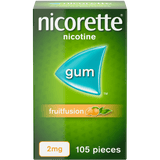

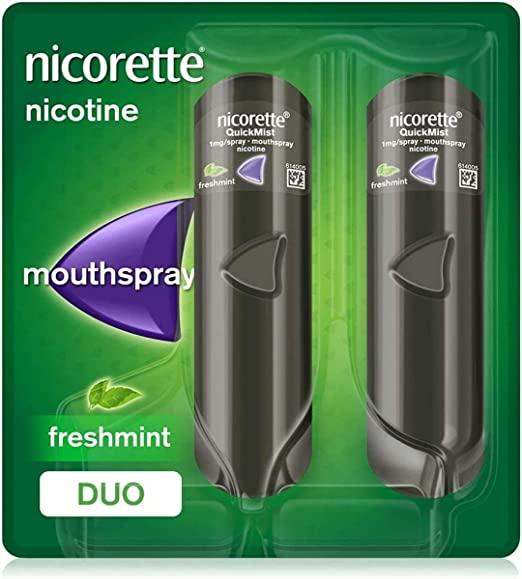





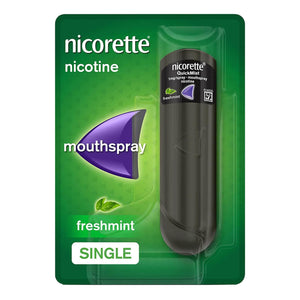
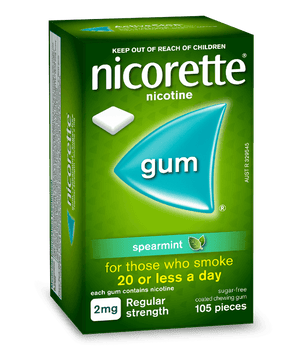





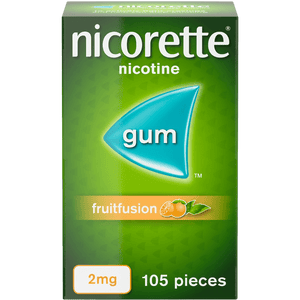
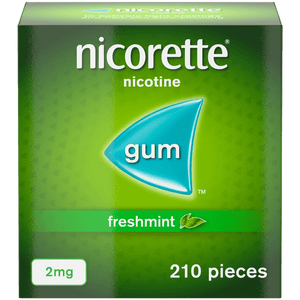







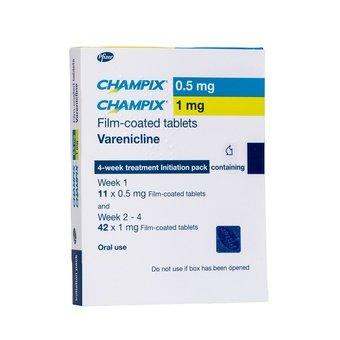

 Rated Excellent by 26,523+ Reviews
Rated Excellent by 26,523+ Reviews